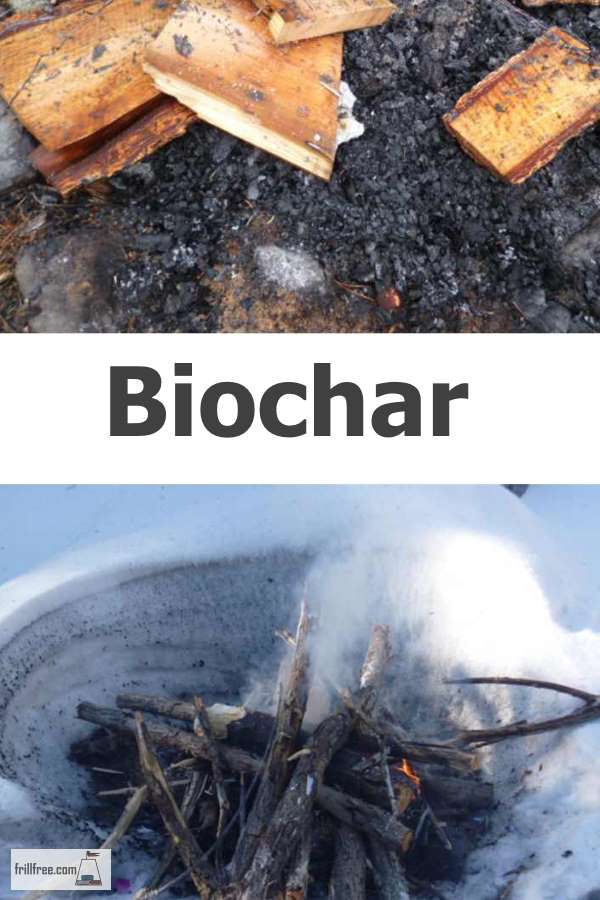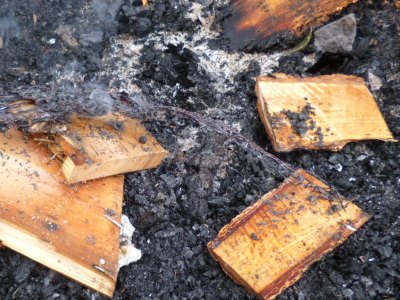- Homesteading
- Fire
- Biochar
Biochar
Natures own carbon sequestering technique
Biochar is the result of burning wood, then burying the charcoal in the ground. It provides carbon storage in a low oxygen environment to reduce the carbon dioxide being released to the atmosphere.

Biochar has several benefits when added to soil:
1. **Enhanced Soil Fertility**: Biochar is porous, which helps it retain nutrients and water in the soil. These characteristics can improve soil fertility and increase agricultural productivity, especially in areas with poor soil health.
2. **Carbon Sequestration**: By converting agricultural waste into biochar, the carbon it contains is stabilized and can remain locked in the soil for hundreds or even thousands of years, effectively removing it from the carbon cycle and mitigating climate change.
3. **Improved Soil Structure**: The addition of biochar can improve the physical structure of soil. This can enhance aeration, reduce soil density, and improve root growth and soil biodiversity.
4. **Reduced Nutrient Leaching**: The porous nature of biochar can help capture and hold onto nutrients that would otherwise leach out of the soil, which is particularly beneficial in areas with heavy rains and in sandy soils.
5. **Water Retention**: Biochar can help soils retain water, reducing the need for frequent watering and providing resilience against drought.
6. **Pollution Mitigation**: Biochar can bind with heavy metals and other contaminants in the soil, reducing their bioavailability and preventing absorption by plants, thus mitigating pollution.
While biochar has a lot of potential, the actual benefit can vary depending on the type of material used, the pyrolysis process, and the specific soil and crop conditions. Research into its effectiveness and best practices continues, as it holds promise for sustainable agriculture and climate change mitigation practices.
It has the added advantage of improving nutrient storage, beneficial microorganism growth and root growth. The terra preta or black soils in the Amazon resulted in phenomenal crops and in fact, thousands of years later, they still produce amazingly well.
It’s unknown if this biochar production was done purposefully, or was simply an act of coincidentally dumping ashes and charcoal from cooking ovens.
However it evolved, it must have been obvious
that the simple addition of charcoal made more nutrients available to the
plants, and it also stored certain elements releasing them very gradually over
many seasons.
In Uganda and other areas, the biochar production methods used for decades involve layering crop refuse in windrows, covering that with layers of clay which are allowed to dry.
Eventually, a hole is broken into the clay covering, a fire is lit and allowed to smolder through the entire thing, consuming the sticks and debris until all is charred.
The fire is extinguished, the clay is stomped down onto the layer of biochar and a crop is planted.
You can make your own terra preta biochar, using small twigs and branches from prunings or coppicing the hedgerows in your garden. Small twigs work the best, as they start to burn quickly, not leaving unburned parts after the fire is quenched.
Dig a trench first, in the area you want to improve, light a small fire and feed it until the wood turns into blackened charcoal. Snuff out the fire by shoveling soil over top of it to cut off the oxygen, and water it.
Within a few days you can plant it with shrubs, perennials or vegetable transplants.
 Biochar in the making - scraps of wood or twigs are partially burned to the charcoal stage, then the fire is damped down with soil to cover it, and watered to extinguish it
Biochar in the making - scraps of wood or twigs are partially burned to the charcoal stage, then the fire is damped down with soil to cover it, and watered to extinguish itOther ways to make biochar involve fire making in a safe environment such as a fire pit, and then snuffing out the coals the same way, moving the coals once cooled into the garden area, or simply add them to your compost pile.
Don’t use barbeque charcoal as this has petrochemical additives that can be harmful to your soil.
Either way, the black coals are a carbon source, tying up or sequestering carbon dioxide to prevent it going into the atmosphere. The reason this technique is so successful at promoting growth of plants is the slow rate of release of its nutrients.
Using the secrets of the ancient farmers of the Amazon basin you too can experience the magic of biochar in your garden to improve your soil.














